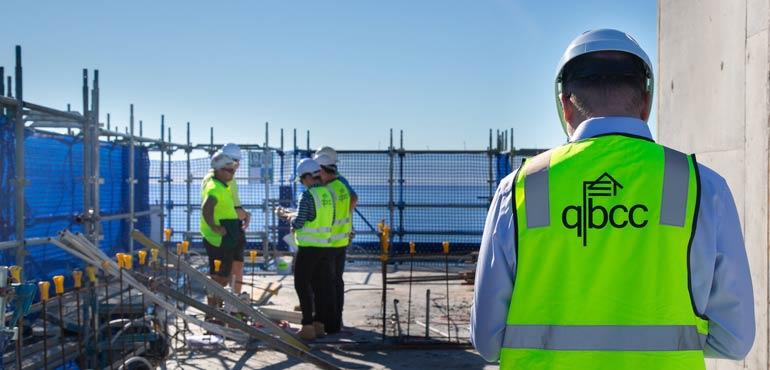
- Home
- About us
- Our corporate publications
- Compliance and Enforcement Strategy
Compliance and Enforcement Strategy 2024-2026
We all benefit from a thriving building and construction industry. It plays an important role in all our lives – from the comfort of our homes and liveability of our communities to the security of our jobs and the economy.
But a thriving industry is only possible when the people interacting with it feel informed, enabled and protected. This is where our role as a regulator becomes so important to minimise harm and safeguard those involved.
The QBCC’s Compliance and Enforcement Strategy aims to reduce risk and protect against harm in the industry through responsive regulatory activity, prioritising resources towards the greatest risk of harm and educating and informing customers and stakeholders to support continuous quality improvement.
We have also placed a strong emphasis on prevention. This means providing licensees and home owners with education and support before things escalate into significant problems.
Adopting a risk-based approach, this strategy focuses on areas where regulatory efforts can make the greatest impact, and it prioritises resources to address non-compliance issues based on their potential harm to the industry and community.
The strategy includes both enduring focus areas, which will continue beyond the strategy period, and more immediate priority areas that focus on and address critical issues currently affecting the industry.
The goal of QBCC’s priority focus areas is to drive widespread voluntary compliance as effectively as possible using the most appropriate mix of regulatory tools.

Insights from industry stakeholders, regulatory data, and feedback from various committees have informed the development of these focus areas, as well as the broader strategy.
Aligned with the QBCC’s Strategic Plan 2024-2027, the strategy also targets 15 key compliance and enforcement priorities to drive a consistent, data-driven approach to regulation. For more details about the key focus areas, view the Compliance and Enforcement Strategy Snapshot 2024-2026
The case studies below show the strategy in action.
An individual is identified by the QBCC undertaking building work without a licence. The value of the work was approximately $6,000.
The individual had no offence history with the QBCC, was cooperative and the work presented a low risk of physical harm.
The individual was issued with a Penalty Infringement Notice to the value of $3,226.
The QBCC received two non-payment complaints from sub-contractors about the same QBCC contractor. Following investigations the QBCC found the licensee had also defaulted on an ATO payment and that the number of creditors had increased over 60 days.
The QBCC made numerous attempts to contact the director of the licensed company and after no response, issued a direction for the licensee to provide documents to enable a financial audit. The licensee eventually responded but the required documents were never provided.
The company’s licence was suspended and then cancelled by the QBCC for continued failure to comply with the audit notice and the escalated risk this entity posed to the industry.
As stated in the Compliance and Enforcement Strategy 2024–26, the QBCC is committed to publishing bi-annual Regulatory Reports that provide a high-level overview of the outcomes from key compliance and enforcement activities. Please see the dedicated Regulatory Reports page for the latest report.
